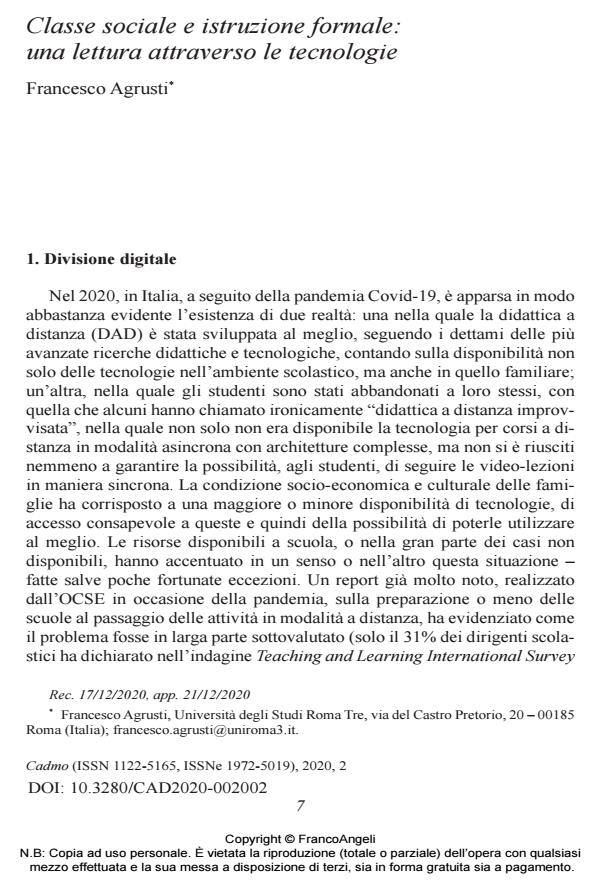Social class and formal education: an analysis through technology
Journal title CADMO
Author/s Francesco Agrusti
Publishing Year 2020 Issue 2020/2
Language Italian Pages 12 P. 7-18 File size 198 KB
DOI 10.3280/CAD2020-002002
DOI is like a bar code for intellectual property: to have more infomation
click here
Below, you can see the article first page
If you want to buy this article in PDF format, you can do it, following the instructions to buy download credits

FrancoAngeli is member of Publishers International Linking Association, Inc (PILA), a not-for-profit association which run the CrossRef service enabling links to and from online scholarly content.
In 2020, in Italy, during the Covid-19 pandemic, the existence of two reali-ties became quite evident: one in which distance learning has been de¬veloped to its fullest potential; another, in which students were left to their own desti-ny and where it was not even possible to guarantee them the pos¬sibility of following video lessons synchronously. The main aim of this paper is to create a profile of the current technological situation of Italian didactics with the help of international surveys and reports, scientific studies and na¬tional reports data. After assessing the effects of educational technology on learning, it is presented an attempt to investigate the causes of technological and cultural change, looking for possible answers in the writings of Aldo Visalberghi. In conclusion, a comparison between distance learning and tra¬ditional education is proposed to better understand what happened to Italian education during the pandemic.
Keywords: Educational technology, influence of technology, distance education, digital divide
- Indagine esplorativa sugli esami universitari a distanza Francesco Agrusti, Cristiano Corsini, in CADMO 1/2021 pp.63
DOI: 10.3280/CAD2021-001005
Francesco Agrusti, Classe sociale e istruzione formale: una lettura attraverso le tecnologie in "CADMO" 2/2020, pp 7-18, DOI: 10.3280/CAD2020-002002